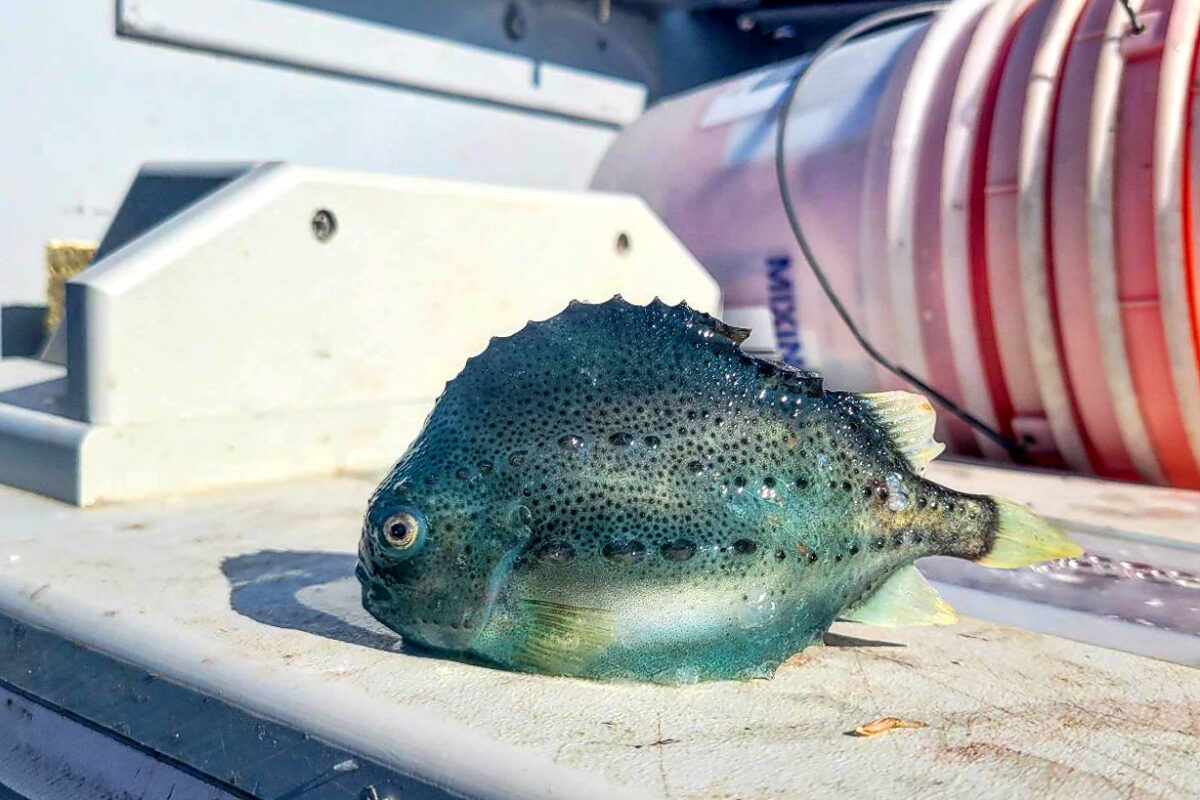
The amazing lumpfish: Its pelvic fins have evolved to form a kind of suction disk that allows them to stick to just about anything—rocks, seaweed, your hand, this measuring board.
Zach Fyke is a biological science technician with Northeast Fisheries Science Center as well as a skilled photographer. Along with data gathered on a September research cruise, he also captured many intriguing images of sea life in the Gulf of Maine that he allowed us to share, with his descriptions, in this gallery. The Science Center has conducted resource cruises since 1885. The scientists research marine mammals and Atlantic groundfish, and their habitats. On all cruises, oceanographic as well as meteorological data are collected. Fyke, originally from Pinkney, Michigan, is a former fisheries observer, and is with the ecosystems surveys branch. This was his first time participating in the Atlantic Northern Shrimp Survey .
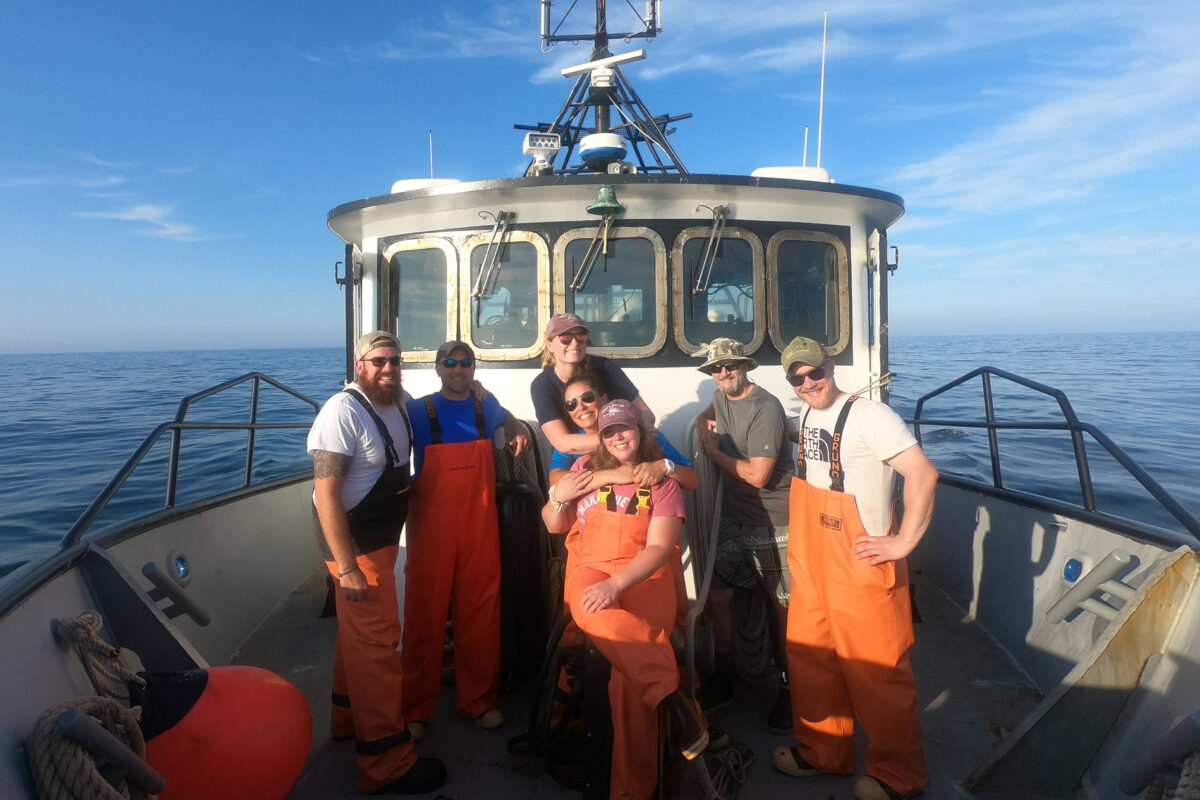
Zachary Fyke, Peter Chase, Megan Barry, Elizabeth Alonzo, Sabrina Dahl, Rob Alexander, and Jayson Lucarelli aboard the R/V Gloria Michelle, the research vessel used for the Northern Shrimp Survey.

An Atlantic northern shrimp. The Atlantic northern shrimp commercial fishery has been closed since 2014 when the stock hit record low numbers. The population has not rebounded. Researchers say warming ocean temperatures could be a reason for the collapse.
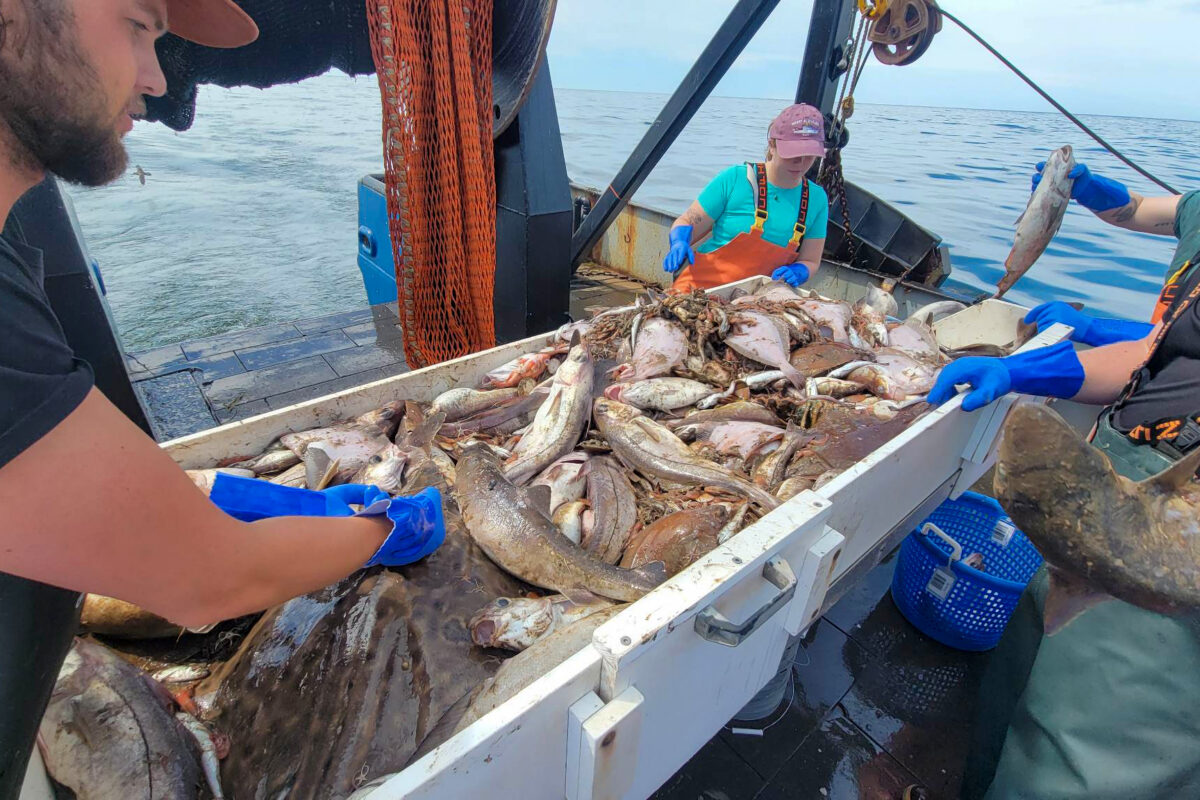
The crew “works up” the catch at the sorting table. That means they sort the catch by species, and some by sex, into individual containers for further processing. On this trip, they caught a wide range of species including Atlantic spiny dogfish, Atlantic halibut, and Acadian redfish. They only had a few small buckets full of Atlantic northern shrimp—the species they were after in the first place.
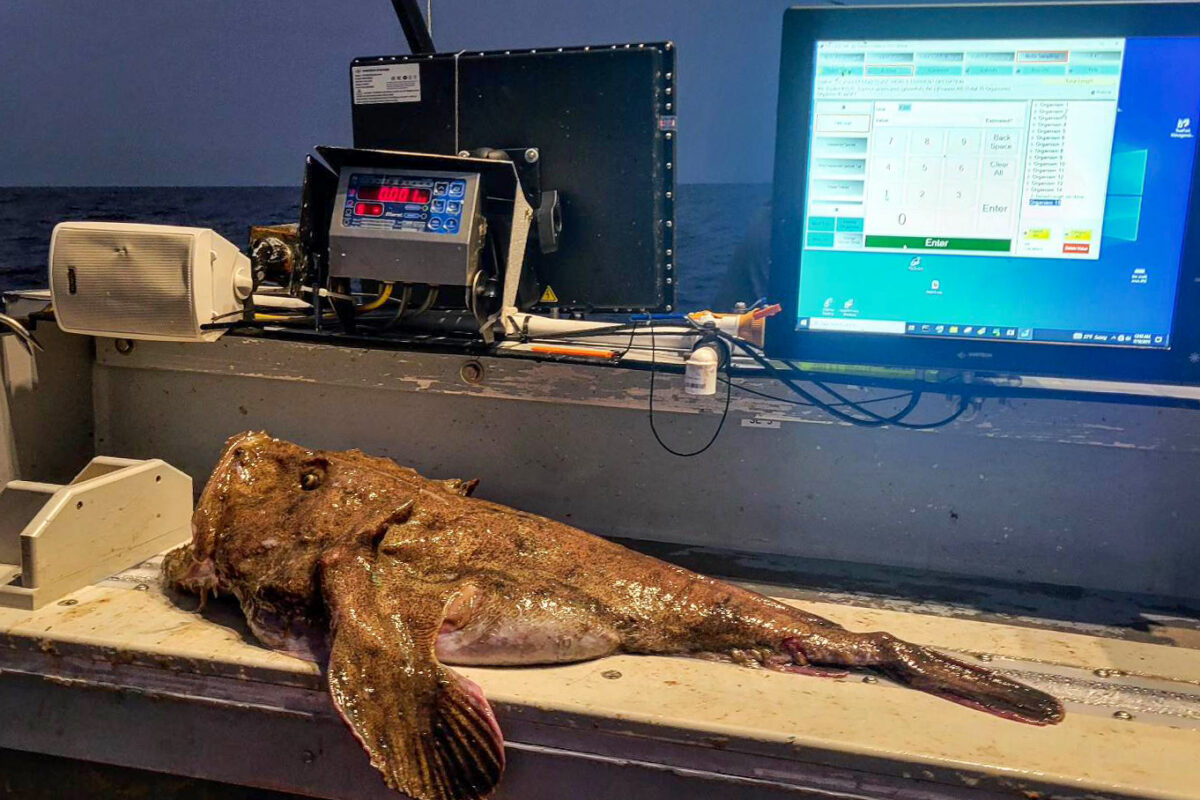
A monkfish lies on top of a digital measuring board—one of the pieces of equipment that is part of NOAA’s integrated fisheries scientific computer system.
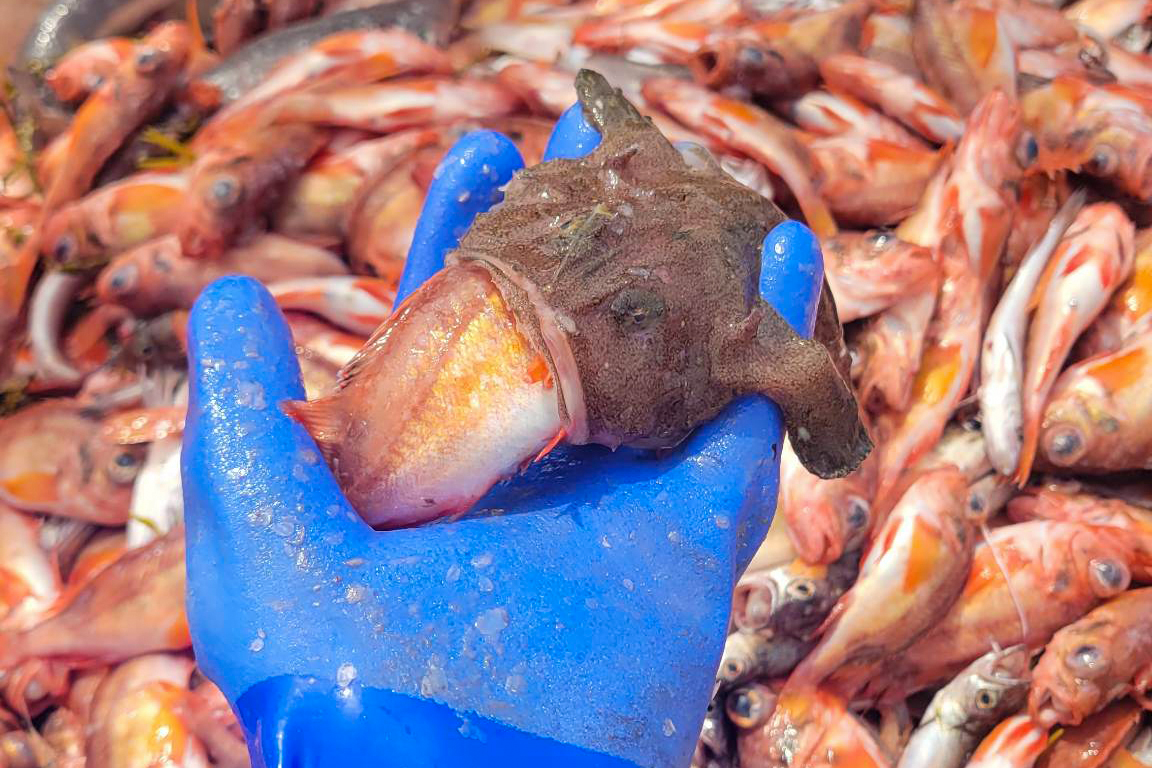
They found a small monkfish with an Acadian redfish hanging out of its mouth. This happens sometimes in trawl and shrimp nets. It’s called “net feeding” and occurs when there are lots of fish in a net. A fish will simply open its mouth and accidentally inhale another fish
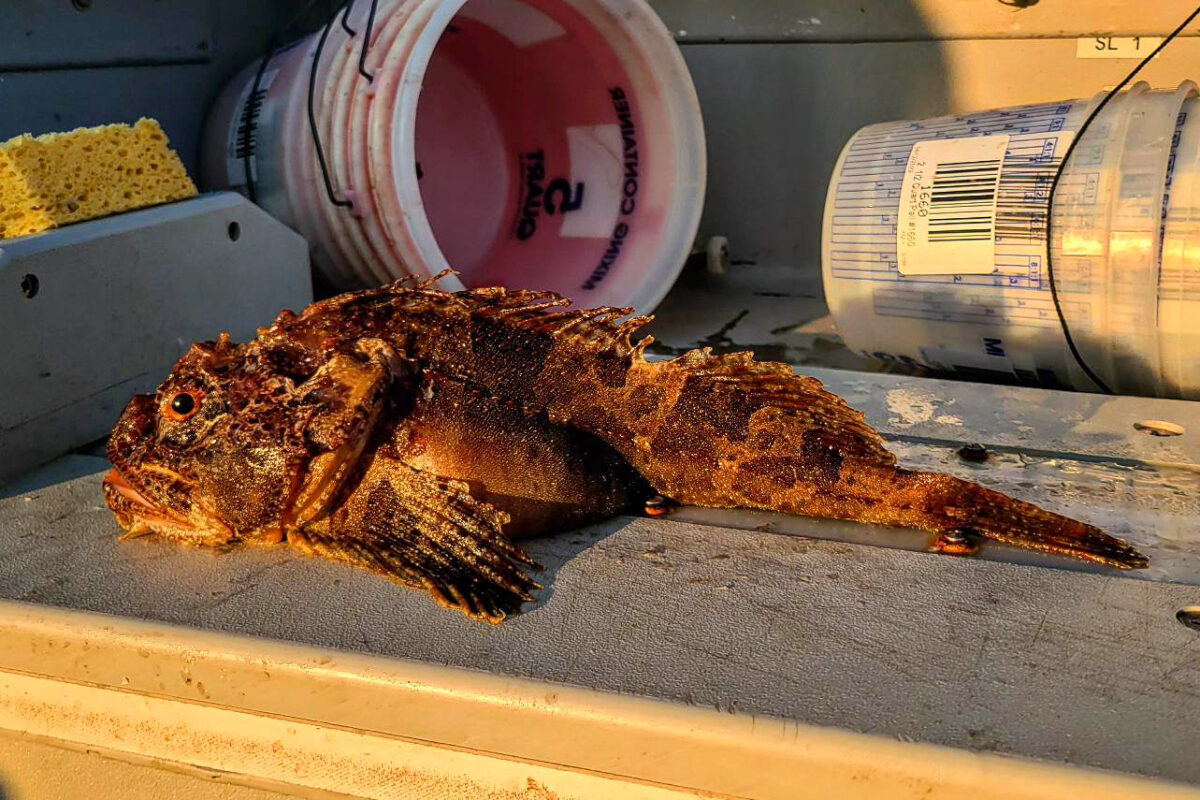
All aglow. Sea ravens are magnificent-looking fish. They come in many shapes and colors
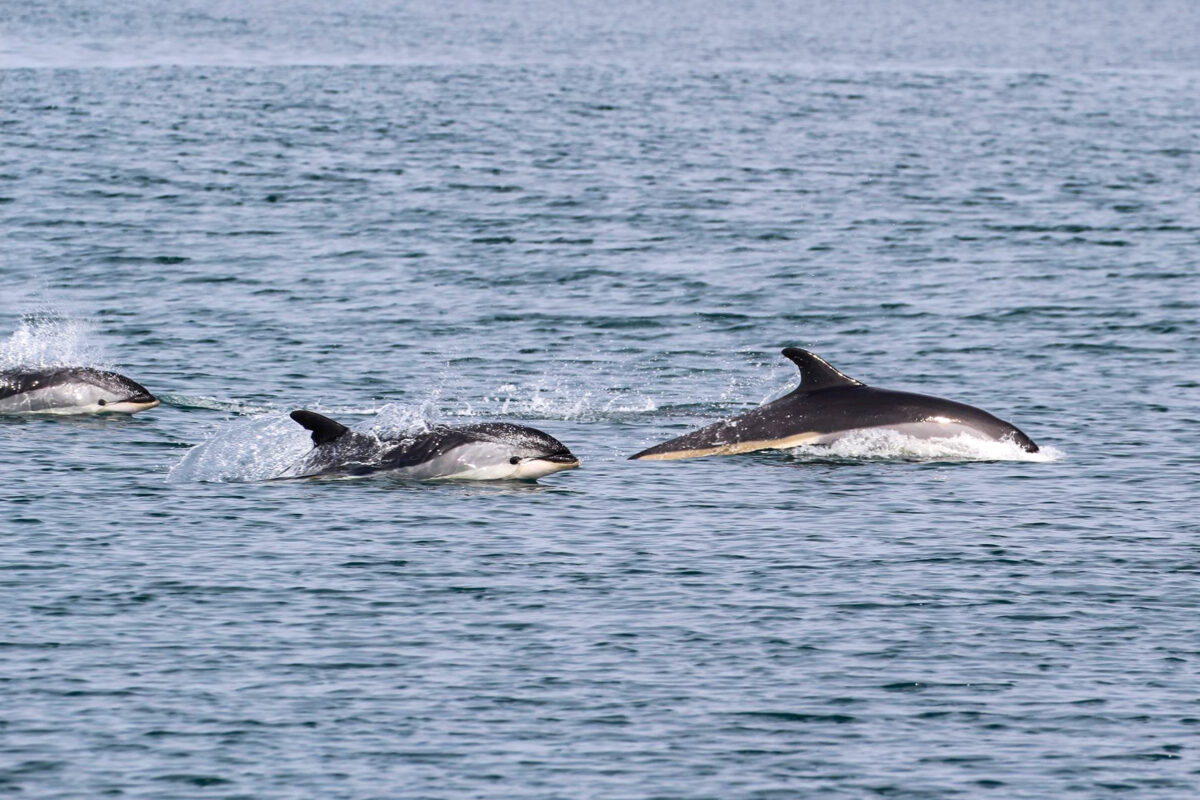
The team spotted a few Atlantic white-sided dolphins during the survey. They get their name from the distinctive yellowish-tan streak on their sides
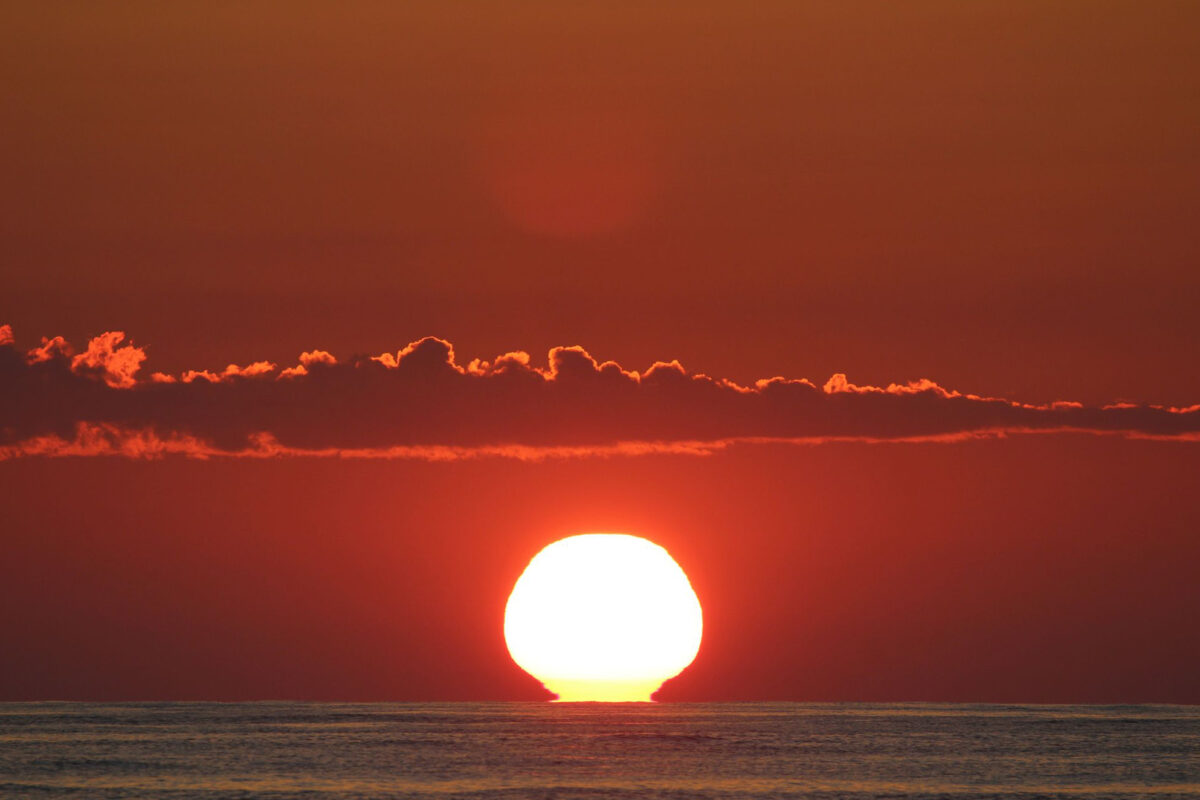
A slightly hazy sunset takes the shape of an Atlantic scallop. It appears this way because of atmospheric refraction—the effect of light traveling through different densities and temperatures of air. Click here to read Fyke’s complete blog.
